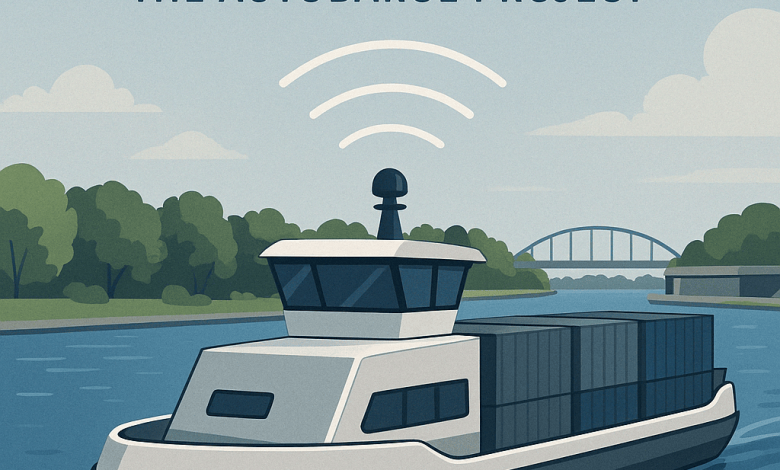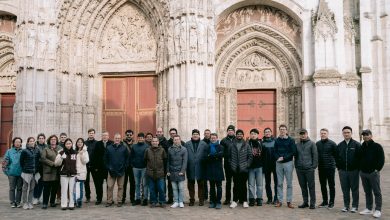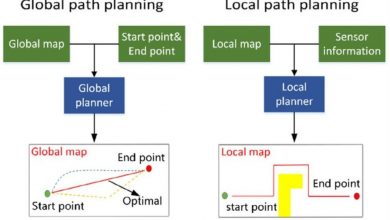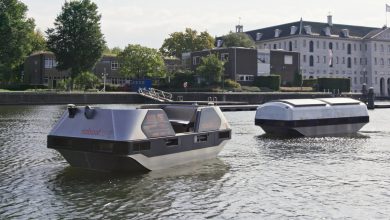Autonomy on water: what we can learn from the AUTOBarge project
Autonomy on Water: Vision of an Intelligent Inland Shipping Future

Navigating through rivers and canals without human crews onboard and efficiently controlling the vessel from remote or autonomously with zero emissions – it’s the vision behind the AUTOBarge project, and it’s already taking shape.
As a researcher at Chalmers University of Technology, I’ve had the opportunity to contribute to this EU-funded initiative, which aims to revolutionize inland waterway transport using autonomous barge technology. Along the way, we’ve encountered not just technical challenges but also learned valuable insights—many of which can be applied far beyond the research more into practice.
1. The Big Picture: Autonomy is More Than Algorithms
When we think of autonomous systems, our minds often jump to Artificial Intelligence (AI), machine learning, and sophisticated control software. And yes, those are critical, as they enable the core decision-making capabilities of an autonomous vessel. But successful autonomy—especially in complex, real-world environments like European inland waterways—goes far beyond just smart algorithms.
Achieving safe and scalable autonomy requires a holistic perspective. In my recent study (SAHA, 2025), I identified significant gaps in the emerging socio-technical system of autonomous inland waterway shipping. It’s not just about technology; it also includes how that technology integrates with human operators, business models, and regulatory frameworks. Without addressing these interconnected elements, the full potential of autonomy cannot be realized.
2. Navigating Complexity: The Challenges of Inland Waterways
Unlike autonomous cars, autonomous barges operate in dynamic, unstructured environments. Currents, wind, floating debris, and ever-changing port layouts make navigation a non-trivial task. Standard GNSS-based navigation alone is not sufficient for reliable autonomous operation. Instead, a layered sensing approach is required—combining radar, lidar, cameras, and GNSS—fused through sensor integration algorithms to build robust situational awareness. AUTOBarge researchers highlighted the importance of considering these environmental factors in the design and implementation of autonomous systems, ensuring safety and reliability in diverse conditions.
3. Building Together: Why Collaboration is Essential
Collaborative efforts among stakeholders are necessary to drive innovation within conventional maritime ecosystem. Several stakeholders must join together towards a common objective to offer integrated business solutions. Bringing autonomy to life requires cooperation across sectors to combine domain expertise from logistics providers, regulatory insights from authorities, and technical innovation from researchers. By working together, we can accelerate development while ensuring the resulting systems are practical, scalable, and safe.
4. Driving Change: How Autonomy Can Accelerate Sustainability
The broader context of AUTOBarge is climate change. Inland waterways are underutilized and can offer a greener alternative to road freight. By automating inland barge operations, we can also reduce labor costs, improve reliability, and make waterborne logistics more attractive to shift freight away from trucks and toward cleaner alternatives. Autonomy isn’t just a tech trend; it’s a strategic lever in the fight for a more sustainable transport system.
5. Lessons in Progress: What We’re Still Learning
One of the most humbling parts of working on AUTOBarge is realizing how much we still don’t know. Every real-world test reveals new edge cases, unexpected behaviours, or system limitations. But that’s also the beauty of research: constant iteration, refinement, and growth.
As we continue developing and testing autonomous barges, we’re not just building smarter vessels—we’re redefining how we think about transportation, safety, and collaboration with the existence of autonomous systems.
An article by Rana Saha.
*Cover image: Illustration generated using AI-based image synthesis tools to conceptually represent the AUTOBarge project’s vision of autonomous inland waterway transport. Elements include autonomous barges, sensor systems, and a digital control network in a smart, sustainable logistics ecosystem.





